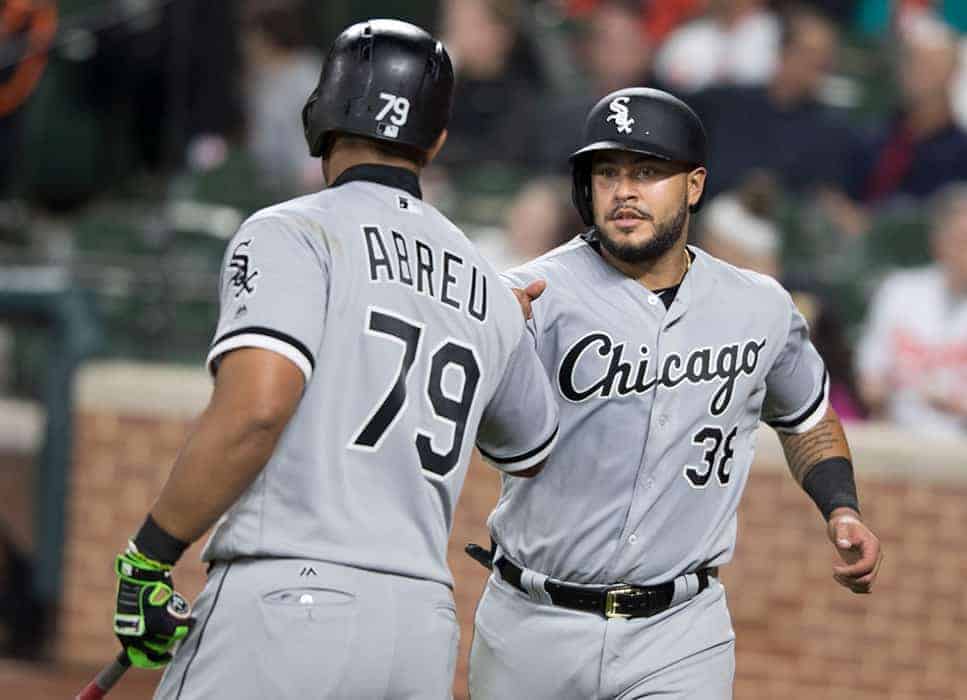The White Sox offense contributed plenty to the loss side of the ledger in 2018, but as we examined a couple of days ago, some historically awful performances from pitchers -- as well as a couple of midseason trades -- is what caused the Sox to careen over the guard rail and into the land of 100 losses.
The hitters don't stand out even in recent memory as a group because the 2013 White Sox were just about worse in every way. If you paired that offense with the most recent group of pitchers, you probably get a team that'd struggle to get its win total comfortably into the 50s.
That said, the White Sox offense had a strange season in terms of individual performances. I suppose when Daniel Palka leads the team in homers by a comfortable margin after spending most of April in Charlotte, and when Omar Narvaez leads in categories that emphasize extra-base hits (OPS, wRC+), the failures outnumbered the successes. Neither player qualified for the batting title, limiting their overall impact on their leaderboards.
The 2013 White Sox, as bad as they were, got some functional performances out of everyday players. Alejandro De Aza was a leadoff man capable enough to score 84 runs without much help, and Adam Dunn had enough power to mash 34 homers, even if he had little else to offer.
The 2018 White Sox were limited by injuries to their two most effective incumbents. Avisail Garcia couldn't provide an encore to his 2017 All-Star performance because of a bad knee that hampered him from the start of the season, and a pair of intimate issues prevented Jose Abreu from fully roaring back to life. The other players to start the overwhelming majority of games at their positions -- your Tim Andersons, your Yolmer Sanchezes, your Yoan Moncadae -- all underwhelmed with the bat.
The end result are isolated vacuums of production that haven't been seen around the White Sox in quite a while. For instance:
Home runs: Daniel Palka, 27
Fewest since: 1992 (George Bell, 25)
Baseball-Reference.com calls Bell's 1992 the least impressive 100-RBI season in White Sox history, as he finished below replacement-level (-0.2 WAR). There's a similar shape in production, with both players held down by a .294 OBP and no defensive value, but at least Palka's big edge in power put him in the black (0.6 WAR). Also, the White Sox picked him up on waivers, as opposed to trading a player of immense future value.
RBIs: Jose Abreu, 78
Fewest since: 1990 (Ivan Calderon, 74)
Abreu's RBI total is the lowest to lead a White Sox team in the New Comiskey Park era. When looking at Calderon's total and the lack of power elsewhere in the lineup, it's surprising that those White Sox won 94 games. Thanks to a strong pitching staff, they outperformed their pythagorean record by seven wins. It's a fitting way to close out the Old Comiskey Era, because that was the story for most of its 80-year existence.
Runs: Tim Anderson, 77
Fewest since: 59 (Steve Lyons and Dave Gallagher, 1988)
That was a team that only had three players qualify for the batting title. They had other things on their mind that year.
Batting average: Jose Abreu, .265
Lowest since: 1968 (Luis Aparicio, .264)
I suspected that it'd been a long time since the leading White Sox hitter finished so far outside the race for the batting title, because the White Sox generally fielded slap hitters in a big outfield. Average was seldom the problem.
But I didn't think it was this bad. The 2018 White Sox became the fifth team in franchise history whose leading qualifying hitter failed to clear .265. The others?
- 1968
- 1967
- 1910
- 1904
That's two years that were historically favorable to pitchers, two Dead Ball Era teams, and nobody else. While batting average has been rightfully usurped by more meaningful stats when it comes to production, it still captures the simple satisfaction of reaching base with a hit, and the White Sox were so short on them in 2018.
Strikeouts: 1,594
Most since: LOL
When you set the major league record for strikeouts in a single season by a team, those hits are harder to come by.






